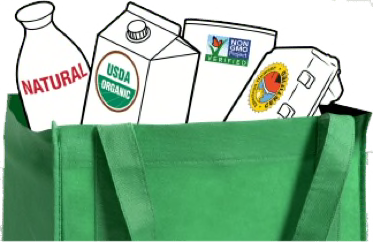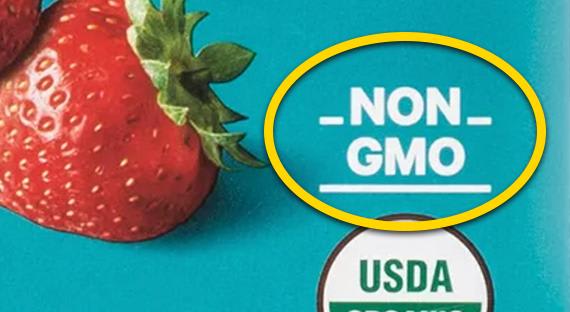For products made with vegetables, fruits, grains, or other plant foods, the Food and Drug Administration has issued a guidance document for food manufacturers that says that food or ingredients derived from plants in products bearing a non-GMO claim should not be produced through the use of genetic engineering. In addition, the agency recommends that manufacturers use certain methods of substantiating the claim, such as adequate record-keeping or organic certification from the Department of Agriculture. (One of the criteria for organic foods is that they not be GMO.) However, while a guidance is meant to explain the FDA's thinking on a topic, companies are not legally bound to follow any recommendations in the guidance. (But the FDA requires that labels be truthful and not misleading.)
The Food and Drug Administration has not issued any recommendations for the use of non-GMO claims on dairy products or eggs.
Labels for meat, poultry, and egg products (such as liquid eggs but not eggs in the shell) are overseen by the Department of Agriculture. For these foods, the USDA says a non-GMO claim must be in line with standards established by a third-party certifying organization. However, there is no list of approved organizations and the standards of various certifying organizations vary.
While the Department of Agriculture requires meat, poultry, and egg product producers to submit a copy of their label for approval if it includes a non-GMO claim, government employees approve this one-time application based only on the supporting documentation provided by the producer. (No such verification is required for other types of foods.) In addition, the USDA doesn't specify the standards behind the certification, such as requiring on-site inspections or testing by an independent agency. Consumers should look for the Non-GMO Project Verified or USDA Organic seal for assurance that the non-GMO claim was verified.

Consumer Reports takes a detailed look at the requirements, definitions, standards, and verification procedures behind food labeling seals and claims, and distills this information into CR ratings. Our goal is to inform and empower consumers so they can act to create demand for a healthier, safer food system.

























